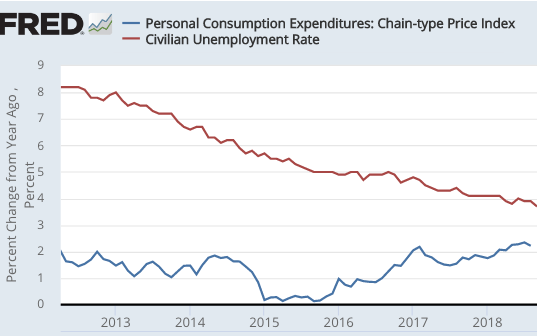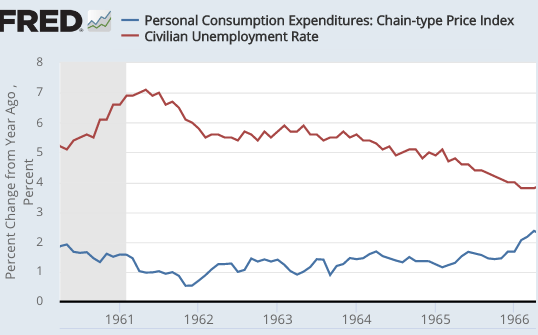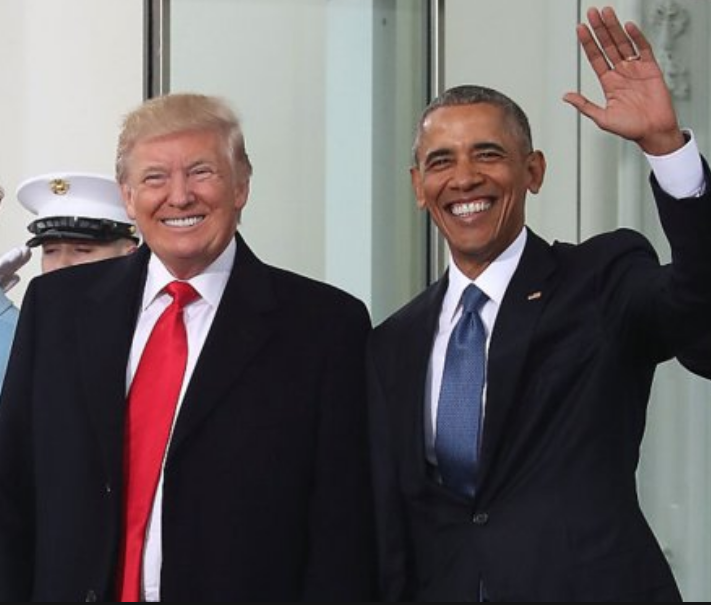Here’s Noah Smith at Bloomberg:
Instead, the U.S.’s best bet is to concentrate on a key Chinese government intervention that can be measured easily — currency manipulation. Though China no longer pegs its currency to the U.S. dollar, it still closely manages the yuan’s value and maintains an extensive system of capital controls. In recent years, China usually hasn’t had to intervene in order to keep its currency cheap, since the yuan has fallen:
But the threat of intervention is still there, which undoubtedly keeps a lid on the currency’s value. Meanwhile, measures like the Economist’s Big Mac Index show that the yuan is undervalued against the dollar by about 44 percent. This effectively provides a subsidy to all Chinese exporters, and a tax on U.S. goods sold in China, thus distorting the global economy and the patterns of world trade.
As his main goal in the trade war, Trump should push for a large upward valuation in the yuan, followed by a much freer float of that currency against the dollar.
Actually, that would be a disastrous policy for China, which (fortunately) they are unlikely to adopt. The Chinese economy is already struggling with a slowdown due to a crackdown on debt and a looming trade war with the US. A sharp revaluation in the yuan could easily push them into a depression. Think about it. A rising power in the East, with a history of being humiliated by Western powers, and with a prickly nationalistic public that is intensively resentful of these past actions, is pushed into depression by a combination of a rabidly anti-Chinese American administration and some really bad exchange rate advice by Western experts. What could go wrong?
[BTW, even if the yuan were undervalued, which it isn’t, it would not constitute a “subsidy” to Chinese firms or a “tax” on US exporters. Words matter. Taxes and subsidies are inefficient because they drive wedges between the prices faced by buyers and sellers. Undervalued currencies do not do this. If you want to argue an undervalued currency is inefficient, you need a completely different argument centered on saving rates.]
So what’s my solution? Simple. Have the Chinese government order McDonalds to raise Beijing Big Mac prices by 44%. Problem solved, no more undervalued currency. Seriously, the Big Mac index tells us absolutely nothing about whether a currency is undervalued or overvalued. If it did, then the Swiss and Norwegians should demand that the US massively revalue the dollar, so that Big Macs over here are as expensive as in Oslo and Zurich. In fact, all the Big Mac index illustrates is the Balassa-Samuelson theorem, which says that lower wage countries tend to have lower price levels because their comparative advantage lies in non-traded goods. (I.e. rich countries are much more productive at building complex products, but not much more productive at cutting someone’s hair or cooking Big Macs.)
Outside the Trump administration, I doubt you’d find many international economists who think PPP should determine the proper exchange rate between any two countries. And even within the Trump administration they’d be more likely to use “trade imbalances” as an excuse for demanding that China revalue. The problem, of course, is that China now has the most balanced trade of any major economy in the world, with a current account surplus estimated to be 0.5% of GDP this year and 0.3% next year. So it’s not clear what sort of “distortions” Smith is referring to. Many of the same people who a decade ago insisted that China needed to revalue because of its current account surplus (which really was large at that time) now seek out some other reason for demanding Chinese revaluation. I guess cheap hamburgers are as good as any, as the importance of maintaining PPP and “balanced trade” are roughly equally invalid arguments.
There is one economy that does have a massive CA surplus, the Eurozone. And to his credit, Smith does not advocate that we demand a sharp euro appreciation (which would also be a disaster—ciao Italia):
Trump has also turned his attention away from Europe, avoiding the mistake of getting into a harmful spat with allies he should persuade to form a trading bloc and a unified front.
This also caught my eye:
There’s no way to measure the amount of state interference that China is using to shut out foreign companies. And IP theft, by definition, happens in secret and is thus difficult to detect or to prove. China’s entire economy is centered around pervasive state intervention and skullduggery — even if it made some moves to change that model, the U.S. couldn’t verify that changes had really been made.
If it can’t be measured, how can we be confident that China’s entire economy is centered around this intervention and “skullduggery”? You might say, “it’s obvious”. No, it’s obvious that these things happen pretty often in China, but it’s not obvious how big a problem it is. If it were, then Smith would be wrong in claiming we can’t measure it. How do we know that the “center” of their economy is not growing rice, or building subways, or selling life insurance? For instance, China’s goods imports are about 15% of their GDP. The same is true of the US, but because the US figure is for both goods and services, I presume China’s total imports are actually a larger share of GDP than in the US. So how important are their barriers to imports? Who knows?
I am not claiming that China has fewer trade barriers than the US, indeed I believe the opposite is true; my point is that the data doesn’t provide any way of knowing how much of this is anecdotal, and the extent to which China really is much more closed than other countries like the US. Let’s not forget that the US also does lots of “skullduggery”, like “Buy America”.
Note that if Smith is right that it’s hard to measure this stuff, then Trump may be wasting his time. How would we even know if they adhered to any trade agreement? That’s why Smith suggests that we instead press for yuan revaluation. But that won’t work either. China could simply stop having a crawling peg with the dollar, and instead have a crawling peg with the euro, yen or pound. When you have a crawling peg, it really doesn’t matter which currency you choose. And there is near-zero chance that China will agree to set their exchange rate according to PPP.
Smith also seems confused about the implications of what’s often called the “China shock”:
And Chinese import competition has been much more harmful to American workers than competition from Mexico, Europe or any other country. Even some Democrats support pushing back against China.
He’s referring to a study that showed the import surge from China had depressed a number of industrial towns in the US. But then he advocates a Chinese policy that would cause an even bigger China shock:
What would constitute a win in a trade war against China? A simple goal would be to get that country to cut tariffs on U.S. imports. Indeed, China’s leaders have already offered some tariff cuts, suggesting that they’re in a mood to deal. But although tariff cuts are good, they don’t form the bulk of China’s unfair trade practices. The government underwrites its industries in a variety of ways, from cheap loans from state-owned banks to energy subsidies to export subsidies. Costs are held down because of lax environmental regulations and low labor standards — China crushes independent labor unions, for example. The U.S. government could demand that the Chinese reduce subsidies, do more to protect the environment, or improve worker rights.
Chinese tariff cuts would cause the US to export more movies and food and high tech stuff to China, and also cause China to export more “mid-tech” industrial goods to America. If you thought the China shock hurt America (I don’t), you should not advocate an even more open China, an even bigger China shock. You should advocate they go back to Mao’s policies, when China was closed to the world and American workers were not “threatened” at all. Of course I don’t worry about China shocks, and thus agree with Smith that fewer Chinese tariffs would be a good thing.
Some might argue that lower Chinese tariffs would reduce America’s trade deficit. They won’t. But what is true is that Trump’s policies are likely to raise our deficit.
At a deeper level, all of this focus on the domestic policies of other nations is deeply misguided. I agree that better economic policies in China would benefit the US. However that same argument is even more true of India, Africa and lots of other places, which buy far fewer US goods than they would with more sensible policies. But that’s because with better policies they’d be richer, not because they would no longer be “cheating” at trade. Since the time of Ricardo, we’ve known that factors such as subsidies, weak environmental laws and low wages do not give countries any competitive advantage of international trade. Paul Krugman demolished all those arguments a second time back in the 1990s. Read Pop Internationalism.
I hope this post doesn’t come across as too negative, but I get frustrated reading the same misconceptions about trade, over and over again. In fairness, there are also things I agree with in Smith’s article:
That doesn’t mean a trade war with China is without downsides and risks. Chinese retaliation against U.S. agriculture has already forced many farmers to accept handouts from the government in order to stay afloat. Disrupting the cozy economic symbiosis that has developed between the U.S. and China will cause painful adjustment, and will also increase the risk of military conflict. If Trump decided to call off his trade war against China right now, it would certainly be a safe course of action.
He’s rightfully skeptical of the Trump approach, and opposes some of the current protectionist policies:
President Donald Trump’s trade war is less bad than it was just a short time ago. After some tense negotiations, the North American Free Trade Agreement has been replaced with a new, very similar arrangement, meaning the disruption to trade — and to U.S. relations with Canada and Mexico — will be contained. The agreement might even ease the damage from the president’s misguided steel and aluminum tariffs.
Unfortunately, China pushes people to advocate policies that are highly counterproductive. Perhaps it’s partly due to the fact that China is an increasingly powerful and successful country that really does have lots of bad public policies, especially in terms of repressing free speech, minority rights, etc. That’s frustrating—I really wish they had better policies (Ditto for Myanmar, Vietnam, Venezuela, Saudi Arabia, Russia, Cuba, Iran, Nigeria, and 100 other countries.) But when I read the arguments for focusing our trade war on China, none of them make any sense. Whether it be “undervalued currencies”, trade imbalances, or domestic policies that discourage US exports, you can always find much worse offenders than China.
So what’s my solution for bad Chinese policies? Push China to high income status as quickly as possible and hope for the best. It worked pretty well in the rest of East Asian, where it was tried. It may not work with the mainland, but going back to the 1930s is even less likely to work.




